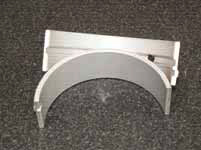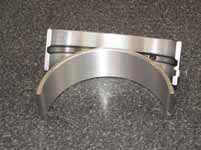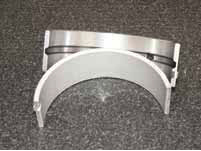For years you’ve seen engine bearings with a gray surface appearance due to the lead/tin overlay, but now with new bearing materials used in some applications you could find a variety of different looks. These differences will not only vary between engine models, but can also change depending on shaft diameter or journal size utilizing different part numbers within the same engine.
Below are three examples of what you may find:
(Figure 1) Bearings made from copper bonded aluminum alloy with steel backing and lead-tin overlay have the gray appearance. These are the bearings you’ve seen for years, the lead-tin overlay stains easily if handled and can change in appearance.
(Figure 2) Bearings made from aluminum alloy with a steel back. These bearing do not have the lead-tin overlay and have a shiny appearance on both upper and lower halves.
(Figure 3) Lastly, bearings made with a combination of both type materials. These use the aluminum alloy with a steel back for the upper and the copper bonded aluminum alloy with steel backing and lead-tin overlay for the lower.
(Examples above are arranged to help explain the differences and are not in order of progression.)
While these different materials are somewhat new to Heavy-Duty engines, they have both been used and discussed for years in the light-duty industries as to which type is superior. One bearing material’s ability to conform and embed vs. the other’s resistance to wear and corrosion is not the point of this bulletin. Our point is to simply make you aware of these changes so that next time you take one out of the box you won’t wonder if it was mis-packaged or missed a step in the manufacturing and did not get plated.
This information was provided by IPD. For more information about IPD, visit www.ipdparts.com.
















